Living with ADHD can be an everyday battle. When I got diagnosed with ADHD 2 years ago (at 45), it felt huge. On the one hand, I didn’t know what that would mean for my writing moving forward. Most of what I knew about ADHD at the time focused on the inability to focus or be productive. I already knew I struggled with focus but what would this mean now? Would medication actually help?
On the other hand, the more I learned about ADHD, the more so much of my life started making sense. And I was able to start putting together some strategies and tricks that helped me work with my brain better instead of constantly fighting against it.
Writing is not easy, but I think for people with ADHD, it can feel even more challenging. That ongoing struggle with mental organization, staying focused on one task at a time, paying attention to details and following deadlines is exacerbated with ADHD. And even worse, all available help seems geared toward
neurotypical people who don’t have the same struggles. “Just prioritize” or “just do time blocking”—these things don’t work and I was usually left feeling like a failure instead of realizing that their tips didn’t work for people like me.
So that is my first tip: be sure you are developing strategies tailored around your unique needs and circumstances as an individual living with ADHD. And if something doesn’t seem to be working, that does not mean you are failing…it just means that the system failed to help you.
Here are some other tips I have learned about writing with ADHD
Manage Your Writing Space as Needed
Some days, I need almost complete silence to get anything done. Music, movies, even alarms on my phone all serve as distractions and make it hard for me to focus.
But other days, I need some level of constant noise, sometimes from two or three different sources at the same time, to make my brain feel stimulated enough to get working. Even right now, as I am writing this, I have Star Trek (2009) playing on the television in the background and “Dynamite” by BTS playing on my computer and yet the words are flowing. I am not getting pulled into the movie or the song to the extent that they are distracting me.
But yesterday was a very different scene. Yesterday, everything felt like it was pulling my attention. Even the cat meowing from the kitchen pulled me away from writing because I had to go focus on the cat.
My brain goes through these cycles where it needs a lot of stimulation to move, but then after a while it shuts down and needs almost zero stimulation to work. It’s variable and that can be hard to plan for.
So I have adjusted my writing routine to reflect this. Part of my routine now includes reflecting in the morning to see if I can predict the type of day my brain is having and how much stimulation I think I need to get through the day. Then I arrange my desk as applicable. On days when I need more stimulation, I will bring out a speaker and a desk fan and use the louder timer. On days when I need more quiet and calm, I use the quieter timer for my sprints and keep the television and music turned off.
Breaking Tasks Into Steps that Help You Function and Feel Rewarded Throughout
I hate the advice “break down your tasks into smaller tasks that are more manageable” because to my brain 100 small tasks is not more manageable than 10 big tasks. 100 tasks is infinitely more overwhelming to me, even if those tasks just add up to the 10 big tasks.
The thing is, for people like me, it’s hard to measure things like effort and time. So I look at a list of 100 tasks, I don’t see “100 smaller tasks”—I see 100 tasks.
So instead of breaking up my bigger tasks into “smaller” tasks, I put them into steps and then arrange those steps:
- Easy and exciting first, build up that momentum and satisfy my brain’s need to do something it likes (no “saving the best for last” here)
- Start the moderate and exciting second, using the momentum I’ve built up, but still leaning in on my need for immediate gratification by working on the parts I am the most excited about. Once I am at a good pausing point but not complete with these tasks, then I move onto
- Moderate but boring third, this way I can use the momentum that I’ve been building up to power through the more boring parts. Usually by this time, some of the other pieces I’ve been working on (or will be working on) are waiting for some of the pieces here that I feel are too boring and hard to start…but now that I’ve gotten some dopamine and feeling good about what I’ve done, the boring doesn’t actually matter as much to my brain.
- Go back to moderate and exciting and finish those up. Usually by now, I need to get back into the part of the project that I was excited to do; and if I did well enough powering through the boring parts, then this part is easy for me to get back into and anything that it was waiting on has been done, although sometimes I might have to go back and forth between the two steps.
- Finish it up; of course this is the goal we all want to get to, so by this point most everything feels exciting. I get near-constant positive charges as I polish off each and every task and the project itself is finished up.
Before this, I would get overwhelmed by all the tasks on my list; but then even if I did manage to start crossing them off, I never felt good about it. I just felt relief that it was crossed off my list. So even finishing a project (which took me longer than it should have because of that initial anxiety and overwhelm at the tasks themselves) didn’t give me that satisfying dopamine hit that most people get to feel when they accomplish something.
I just felt relief that it was off my list and I didn’t have to see it anymore.
Now, I am able to feel excited all the way through a project, even if things are done out of order or if they’re not done in a way that anyone else would do them.
Setting a Timer for Short Bursts of Focused Writing Time
I live and breathe by writing sprints, which are short, concentrated blocks of time spent just writing.
The length of time is up to you—again, set up a strategy that works for your brain. For me, 20-minute sprints with a 10-minute break works best. Anything shorter than that and I’m not able to get onto a roll as effectively, but anything longer than that and my brain feels exhausted from trying to make the words go. But I know other people who do 15-minute sprints with 2-minute breaks, I know people who do 45-minute sprints with 15-minute breaks…it’s all in what works best for you.
My advice would be if you’ve never done sprinting before, start small (5 minutes) and every couple of weeks increase the time until you find your sweet spot.
Writing sprints can be a lot like running sprints: they are not designed to be long races around the countryside. They are designed to be fast and focused around a specific track. And that’s all you’re doing while you sprint: running at full speed around that track.
In the same way, while you are doing a writing sprint, focus on writing. Everything else (planning, editing, revisions) can be done outside of your writing time.
Experimenting with Different Writing Tools (e.g. Pen and Paper vs Computer) and Spaces
This is right up there with arranging your writing space and routine based on your needs for the day.
Some days, I need my desktop computer at my desk to get anything meaningful accomplished. Other days, I need to sit in bed with my laptop, and other days I spend all my time dictating my words into my phone.
There is a lot of advice out there about having a dedicated writing space, and I do agree for the most part that having a dedicated writing space is essential for getting started and motivated with writing. It’s also essential for those of us who are writing as a business and want to be able to claim that writing space as a home office on our taxes.
But having a dedicated writing space does not mean you can’t pivot to another space from time to time. In fact, sometimes that pivot into another environment is exactly what you need to get motivated and running again.
As far as tools, use the ones that are best for you. I have friends who write entire books in notebooks with a pen or a pencil. And I think that’s amazing. They do that because it keeps them off the internet, which they find very distracting. I know I could never do that, though. I love handwriting things, but besides the fact that my wrists just can’t handle handwriting for long periods of time anymore, my handwriting is very slow compared to typing and my brain just goes too fast. As a result, I end up skipping words or getting frustrated that my hands can’t keep up.
Then there’s dictation, which is a lot like trying to force yourself to write with your nondominant hand. It was so difficult for me to get the hang of dictation at first that I would get frustrated and give up after barely a sentence. After about 6 weeks of concerted effort to make it work, now I can confidently switch between that and typing on my computer. And some days, that’s what I need to do: my brain just moves too fast for my fingers to keep up with typing and dictation is the way to go. Other days, talking into my phone is just one step too far in terms of stimulation and I need to get back to the comfort of my keyboard.
Experiment, try different things, and find the tools and spaces that work best for you. Take some time to reflect on why these tools work for you the way they do, and be okay with pivoting as needed so you can keep going.
Self-Care Tips
One of the biggest things that I have learned about having ADHD is that it requires more focus on self-care. This is because having ADHD itself is exhausting. Nothing happens just because it’s habit or second-nature. Everything we do is done as an active choice and that gets mentally exhausting very quickly.
Prioritizing sleep, exercise, and healthy eating habits
I get it, in today’s hyper-capitalistic world, it’s easy to prioritize work over sleeping or anything else. It’s just so easy for my working day to go from “9 to 5” straight to “the second I wake up to the second I fall asleep exhausted.” Prioritizing sleep, exercise, and healthy eating habits can make a significant difference in your ability to focus and write effectively. Getting enough sleep is essential for cognitive functions such as memory retention and, yes, creativity.
A regular exercise routine can also boost cognitive performance by increasing blood flow to the brain. Eating a balanced diet that includes plenty of fruits and vegetables can provide the brain with essential nutrients.
And because it’s so hard for people with ADHD to remember to do these things, having alarms and reminders in place to schedule them at specific times is extremely helpful.
Taking regular breaks and engaging in stress-reducing activities
Writing with ADHD can be mentally exhausting, so regular breaks throughout the day are crucial. Stepping away from the screen or notebook for even just a few minutes every hour or so really helps me stave off burnout.
During these breaks, I might do some chores or housework, somcething like the dishes or a load of laundry, that doesn’t take long but provides just enough of a mental break from writing to recharge me. Other times, I might go for a walk, play with my cats or my kids, or just go and take a nap.
Final Thoughts on Writing with ADHD
Writing is already a daunting task, one that can feel even more exhausting when you have ADHD. But by developing strategies tailored to your specific needs and preferences, you can become more productive and efficient in your writing process.
Writing should be an enjoyable experience rather than a stressful one so don't forget to enjoy the journey!
***************************************************
If you enjoyed Naomi's article, then be sure to check out her new book Write Out Loud: How to Get Over your Fears and Build the Confidence to Finally Write Your Book.
You can purchase a copy on Amazon, Barnes and Noble, or Bookshop.org. You can also get an autographed copy (and put more money back in the author's hands) by purchasing it on Glitz and Glamour. Make sure you also add it to your GoodReads reading list.
Naomi and her book are also on the Women On Writing blog tour over at The Muffin. Be sure to check out the tour and all of the exciting stops
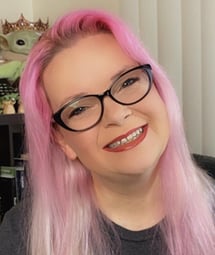 Author bio: Naomi D. Nakashima is a bestselling author of nonfiction, a ghostwriter with 20 years experience, a trained psychotherapist, and a TikTok writing coach with thousands of followers who attend her coaching events and regular Q&As. Everything I Need to Know About Parenting I Learned from Watching Star Trek, her first book published under her name, became an international Amazon bestseller and stayed on the bestseller list for step-parenting and blended families for three years.
Author bio: Naomi D. Nakashima is a bestselling author of nonfiction, a ghostwriter with 20 years experience, a trained psychotherapist, and a TikTok writing coach with thousands of followers who attend her coaching events and regular Q&As. Everything I Need to Know About Parenting I Learned from Watching Star Trek, her first book published under her name, became an international Amazon bestseller and stayed on the bestseller list for step-parenting and blended families for three years.
As a single mother of two, Naomi daydreams about spending her free time reading books, diamond painting, and traveling the world.
Follow her online at:
Website: https://helpmenaomi.com/
Shop: https://shop.glitzandgrammar.com/
Facebook: https://www.facebook.com/helpmenaomi
Twitter: https://twitter.com/helpmenaomi
Instagram: https://www.instagram.com/helpmenaomi/
Pinterest: https://www.pinterest.com/helpmenaomi/
LinkedIn: https://www.linkedin.com/in/helpmenaomi/
Journaling Power Revolution Series

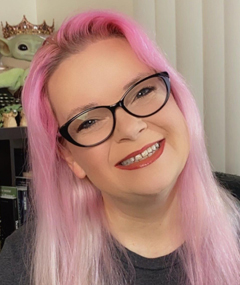
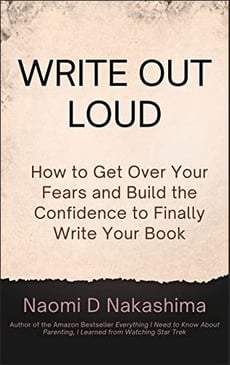
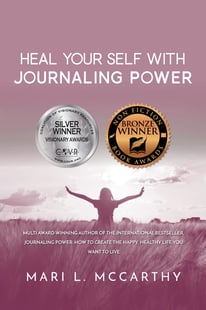
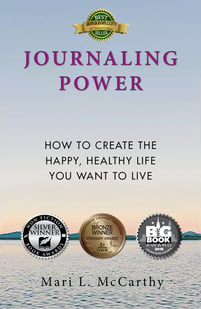
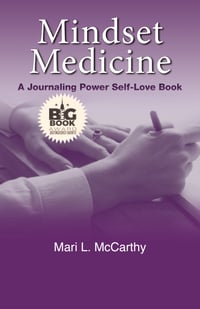
Leave Comment